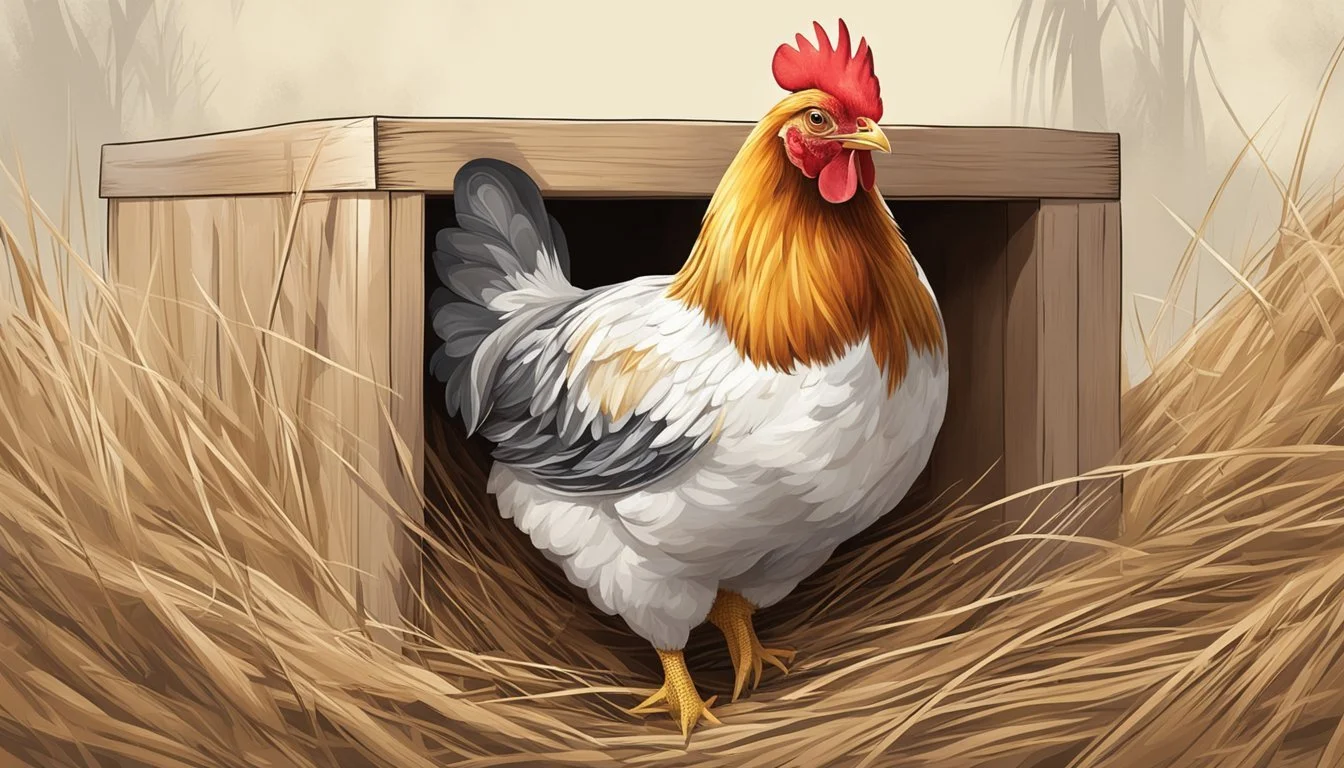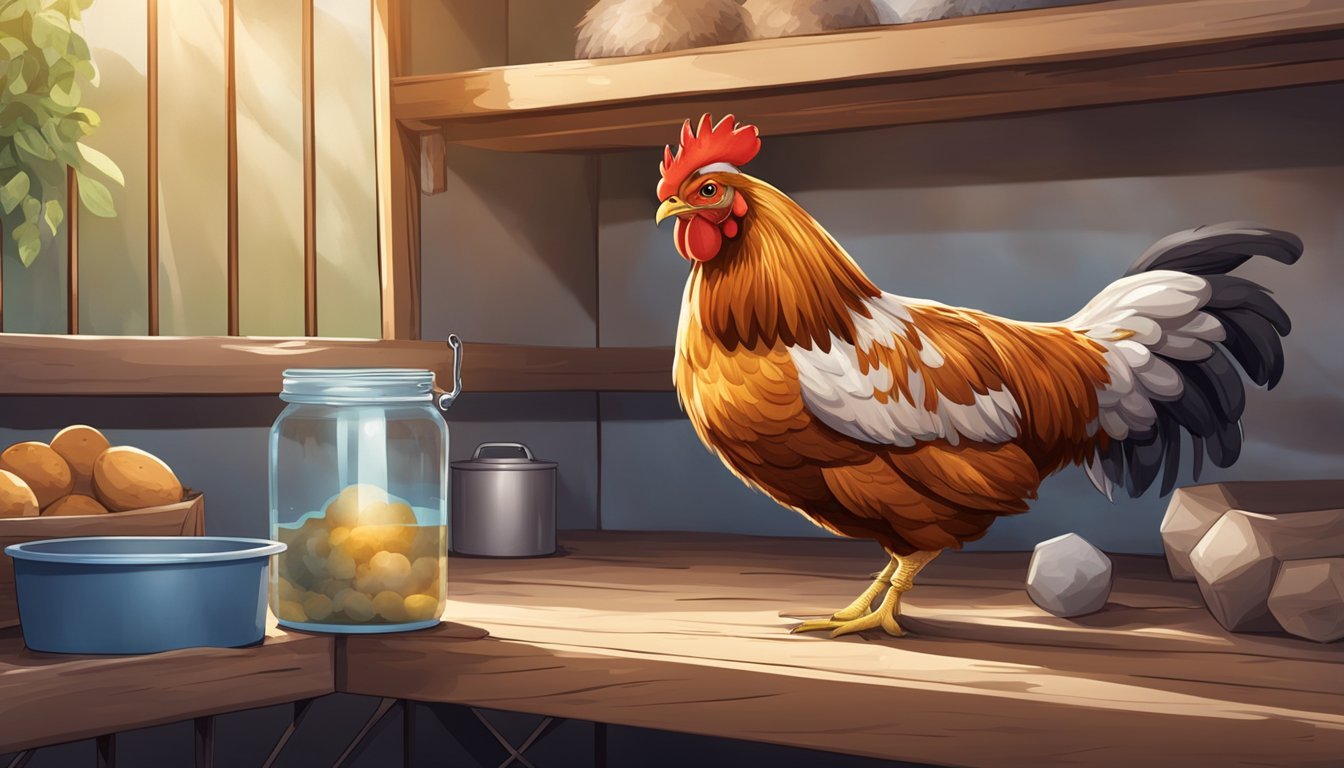What Should I Do If My Chicken Gets Injured?
Essential Care Steps for Poultry First Aid
When a backyard flock keeper discovers their chicken has been injured, swift actions can make a significant impact on the bird's recovery. Injuries in chickens can range from minor cuts and pecks to more serious conditions that threaten their health and well-being. A keeper's first step should be to assess the extent of the injury calmly and carefully. It is essential to manage any heavy bleeding quickly before proceeding to clean and dress the wound.
Chickens possess an impressive capacity to heal, with their skin and tissues capable of regenerating effectively. However, the healing process depends greatly on the initial care provided by the keeper. Cleaning the wound with a disinfectant such as hydrogen peroxide to remove debris and bacteria significantly reduces the risk of infection. Regular monitoring of the chicken's injury and behavior following the initial treatment is important to ensure proper healing and prevent complications.
An isolated space away from the flock will give the injured chicken the chance to recover without further stress or pecking from other birds. Keeping this area clean and calm can further promote healing. If necessary, pain management may be considered to keep the chicken comfortable during its recovery. Understanding these steps equips poultry keepers with the skills to manage chicken wound care effectively and supports the well-being of their feathery companions.
Assessing the Injury
When a chicken gets injured, immediate and accurate assessment is crucial. This process involves identifying common injuries and determining their severity to provide appropriate care.
Identifying Common Injuries
Injuries in chickens can range from superficial such as lost feathers or minor cuts to more serious conditions, including deep wounds or broken bones. It’s essential to carefully inspect the chicken, noting any missing feathers, visible wounds on the skin, signs of infection, or bleeding. A wound might appear as a break in the skin, often with missing feathers around it, and, if serious enough, can lead to an infection or attract pests.
Determining the Severity
To determine the severity of a chicken's injury:
Assess bleeding: A wound with persistent bleeding requires immediate attention, possibly using a styptic powder to help stop the bleeding.
Check for signs of infection: Swelling, redness, heat, or pus around the injury are indicative of infection.
Observe the chicken's behavior: Listlessness, a lack of appetite, or abnormal movements may suggest internal injuries.
Look for scab formation: Scabs indicate healing but may need protection to prevent pecking by other chickens.
External injuries are typically more straightforward to identify; however, internal injuries may require professional diagnosis. If an injury appears severe or if there is any doubt about the extent of internal damage, consult a veterinarian for a thorough evaluation.
Initial Steps
When a chicken is injured, immediate and appropriate action is necessary to prevent further harm and initiate healing. The key points include isolating the bird, halting any bleeding, and cleansing the wound meticulously.
Isolating the Injured Chicken
It is essential to isolate the injured chicken from the rest of the flock to prevent pecking and further stress. Place the chicken in a safe, quiet enclosure, such as a cage or a separate area within the coop with comfortable bedding to allow for rest and recovery.
Stopping the Bleeding
If the wound is bleeding, stop the bleeding as quickly as possible. Applying gentle pressure with a gauze pad directly to the wound can help control blood loss. One must be cautious not to apply excessive pressure, which might cause additional harm.
Cleaning the Wound
Proper wound care begins with cleaning. Use a saline solution or diluted hydrogen peroxide to irrigate and clean the wound thoroughly, removing debris and dirt. Utilize tweezers to remove any large or visible particles. This cleansing process reduces the risk of infection and promotes better healing outcomes.
Wound Care
When a chicken sustains a wound, prompt and proper care is critical to minimize the risk of infections and ensure healing. The following steps should be taken to address a cut or injury.
Applying Antibiotic Ointment
Once the wound is clean, it is important to apply an antibiotic ointment to prevent bacterial infections. Products such as Neosporin are widely used; however, ensuring that the ointment is safe for poultry is essential. A thin layer over the wound will suffice to ward off harmful bacteria.
Dressing the Wound
After the antibiotic ointment has been applied, protecting the area with a dressing is vital. Vet wrap is an excellent choice for its flexibility and breathability. It adheres to itself, making it easy to secure without sticking to the chicken's feathers. A sterile bandage can be placed directly on the wound before wrapping to absorb any discharge and cushion the area.
Monitoring for Infections
Careful monitoring of the wound for signs of infection is critical. Redness, swelling, heat, or an unpleasant odor can indicate bacterial growth. If infections are suspected, seeking veterinary advice is recommended to obtain appropriate treatment which may include antibiotics specifically designed for poultry.
Pain Management
When a chicken is injured, effectively managing pain is crucial to minimizing stress and promoting recovery. A key aspect of pain management is understanding the right pain control methods and creating an environment that reduces stress for the injured bird.
Pain Control Methods
The first step in pain control is to assess the injury and provide immediate care. Pain medication specifically formulated for poultry should be administered, but only under veterinary guidance to avoid complications. Over-the-counter pain relievers suitable for humans can be harmful to chickens, so professional advice is essential. For minor injuries, the application of a cold compress can help to reduce swelling and pain.
Reducing Stress
A chicken in pain can quickly go into shock, so reducing stress is a priority. Create a calm and comforting environment by isolating the injured chicken from the flock to prevent pecking and further injury. Ensure the isolation area is well-bedded with clean, soft materials to provide comfort and warmth. Keep the surroundings quiet and handle the bird gently when necessary. Providing familiar food and water within easy reach can also help to reduce stress and distract from the pain.
Healthcare
When a chicken sustains an injury, proper healthcare is crucial to support its recovery. Knowing when to seek professional help and how to apply home remedies can significantly influence the healing process.
When to Call a Veterinarian
One should contact a veterinarian immediately if the chicken has a severe injury, shows signs of infection, or if the owner is unable to manage the wound. Veterinarians possess the necessary knowledge and expertise to prescribe treatments such as antibiotics or electrolytes, which are vital for the chicken's health. It is especially important to seek professional help if there is heavy bleeding, broken bones, or if the bird is in shock.
Using Home Remedies
For minor injuries, home remedies can be effective. Clean the wound with saline solution and apply an antiseptic. One can use natural options like honey or herbs known for their healing properties. However, it's essential to have a basic understanding of chicken healthcare to safely use these remedies. Always monitor the wound closely for any signs of worsening or infection.
Remember, the well-being of the chicken is paramount. When in doubt, always opt for a professional opinion to ensure the best care for an injured bird.
Nutrition and Hydration
Proper nutrition and hydration are critical in helping an injured chicken recover. They require a balanced diet and constant access to clean water to promote healing.
Providing Adequate Food and Water
Chickens need continuous access to food and water, especially when injured. Ensure that the feed is easily accessible and the water is fresh. It may be necessary to place food and water closer to the injured chicken if they have limited mobility. Water intake is vital for hydration and assists in digestion and nutrient absorption.
Feeding: Offer regular chicken feed; ensure feeders are clean and placed within easy reach.
Water: Provide clean, fresh water daily, check frequently to maintain supply.
Dietary Considerations for Recovery
A recovering chicken benefits from a diet rich in proteins and vitamins. Adding extra protein, such as mealworms or eggs, can help with tissue repair. Supplements with vitamins or incorporating vitamin-rich treats can support their immune system. Yogurt is sometimes recommended for probiotics, which can aid in gut health.
Vitamins: Consider adding a vitamin supplement to the chicken's water or feed.
Proteins: Include high-protein foods like mealworms or scrambled eggs to help with tissue repair.
Treats: Offer healthy treats in moderation; treats should not make up more than 10% of their diet.
Recovery Process
When a chicken sustains an injury, the recovery process is critical. This phase ensures that they can heal effectively and return to their flock with strength and mobility.
Creating a Recovery Space
A well-prepared recovery space is the cornerstone of a chicken's rehabilitation. This area should be quiet, safe, and separate from the other birds to prevent pecking and further injury. It’s imperative to provide soft bedding to support the injured chicken's comfort, and the bedding should be easy to change to maintain cleanliness. The space should be enclosed but with adequate ventilation and protection from the elements.
Physical Therapy
Physical therapy may be needed depending on the injury's severity. Gentle exercises can help prevent muscle atrophy and maintain joint mobility during recovery. In some cases, aiding a chicken's movement by carefully supporting its weight and encouraging it to use the affected limb can be beneficial. The goal is to gradually rebuild strength, ensuring the chicken will be able to resume normal activities, including laying eggs, without issues.
Preventing Future Injuries
To sustain a healthy and safe environment for backyard poultry, chicken keepers should implement preventative measures to mitigate risks of injury. These strategies encompass reinforcing coop safety, guarding against predators, and managing the social interactions within the flock to avoid bullying.
Chicken Coop Safety
A secure and well-maintained chicken coop is vital for the safety of the flock. Chicken keepers should routinely inspect the coop for any sharp edges or loose wires that can cause injuries. It's important to ensure that all latches are functioning properly to keep the chickens contained and safe from potential hazards. Additionally, the coop should be spacious enough to prevent overcrowding, which can lead to stress and aggression among chickens.
Protecting Against Predators
Predators pose a significant threat to backyard poultry. To protect the flock, homesteaders should reinforce the coop with predator-proof materials, such as hardware cloth instead of chicken wire. The coop and run should be secured with a sturdy roof and foundations to deter digging predators. Placement of motion-activated lights or alarms can also deter nocturnal hunters from approaching the coop.
Managing Flock Dynamics
Flock dynamics can lead to injuries if not managed correctly. Chicken keepers need to monitor their birds for signs of aggression or bullying, intervening when necessary. Introducing new birds to the flock should be done carefully and gradually to minimize stress and conflict. Providing enough space, perches, and feed stations can decrease competition for resources and thereby reduce aggressive behavior.
By addressing these key aspects, chicken keepers can greatly reduce the chances of injury within their backyard flock, ensuring the birds' well-being and longevity.








